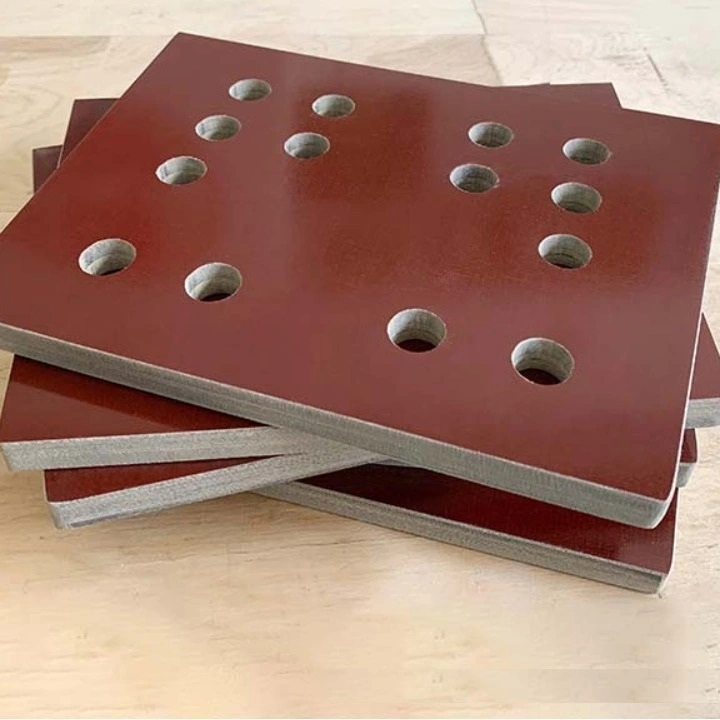How Does Moisture Affect the Electrical Performance of Phenolics?
Moisture infiltration can significantly impact the electrical properties of phenolic laminated sheets, potentially compromising their insulation capabilities. Understanding these effects is crucial for implementing effective protection measures.
Dielectric Strength Reduction
When moisture penetrates phenolic laminated sheets, it can lead to a substantial decrease in dielectric strength. This reduction occurs as water molecules interfere with the material's ability to resist electrical breakdown. As a result, the sheet's capacity to withstand high voltages without conducting electricity diminishes, potentially leading to insulation failures in critical applications.
Increased Conductivity
Moisture absorption by phenolic laminated sheets can result in heightened electrical conductivity. The presence of water molecules creates pathways for electrical current to flow, undermining the material's inherent insulating properties. This increased conductivity may lead to unintended current leakage, posing safety risks and reducing the overall efficiency of electrical systems utilizing these sheets.
Accelerated Aging and Degradation
Prolonged exposure to moisture can accelerate the aging process of phenolic laminated sheets. The interaction between water molecules and the material's chemical structure can trigger degradation mechanisms, leading to a gradual breakdown of the sheet's electrical and mechanical properties over time. This accelerated aging can significantly shorten the operational lifespan of components made from these materials.
Sealing Techniques and Moisture-Resistant Coatings
Implementing effective sealing techniques and applying moisture-resistant coatings are essential strategies for protecting phenolic laminated sheets from moisture ingress. These methods create barriers that prevent water molecules from penetrating the material, thereby preserving its electrical and mechanical properties.
Edge Sealing Methods
The edges of phenolic laminated sheets are particularly vulnerable to moisture absorption. Applying specialized edge sealants can significantly enhance moisture resistance. Epoxy-based sealants offer excellent adhesion and durability, creating a robust barrier against water ingress. For applications requiring flexibility, silicone sealants provide an effective alternative, accommodating thermal expansion and contraction while maintaining a watertight seal.
Surface Coatings for Enhanced Protection
Applying moisture-resistant coatings to the surface of phenolic laminated sheets can provide an additional layer of protection. Polyurethane-based coatings offer exceptional water repellency and abrasion resistance, making them ideal for harsh environments. For applications requiring transparency, acrylic coatings can be employed, offering clarity while still providing effective moisture protection. These coatings not only repel water but also enhance the sheet's resistance to chemical exposure and UV radiation.
Innovative Nano-Coatings
Advancements in nanotechnology have led to the development of highly effective moisture-resistant coatings for phenolic laminated sheets. These nano-coatings create a hydrophobic surface at the molecular level, causing water droplets to bead up and roll off rather than being absorbed. The ultra-thin nature of these coatings ensures that they do not alter the material's dimensional properties while providing superior moisture protection and enhancing the sheet's overall durability.
Storage and Handling Best Practices for Humid Environments
Proper storage and handling of phenolic laminated sheets in humid environments are crucial for maintaining their integrity and performance. Implementing best practices can significantly reduce the risk of moisture-related damage and ensure the longevity of these materials.
Climate-Controlled Storage Solutions
Utilizing climate-controlled storage facilities is paramount for protecting phenolic laminated sheets from moisture exposure. These environments maintain consistent temperature and humidity levels, preventing condensation and moisture accumulation. Implementing dehumidification systems can further reduce ambient moisture, creating an optimal storage atmosphere. It's essential to store sheets vertically to minimize surface contact and allow for proper air circulation, reducing the risk of moisture entrapment between layers.
Protective Packaging Techniques
Employing appropriate packaging materials and techniques can provide an additional layer of moisture protection during storage and transportation. Wrapping phenolic laminated sheets in moisture-barrier films or desiccant-lined bags creates a protective envelope that shields the material from ambient humidity. For long-term storage, vacuum-sealed packaging can be particularly effective, removing air and potential moisture from the immediate environment surrounding the sheets. It's crucial to inspect packaging regularly for any signs of damage or breaches that could compromise moisture protection.
Acclimatization Procedures
When transitioning phenolic laminated sheets from storage to use in humid environments, proper acclimatization is essential to prevent moisture-related issues. Gradually exposing the sheets to the ambient conditions of their intended use environment allows for controlled moisture equilibration. This process helps mitigate the risk of sudden dimensional changes or moisture absorption that could occur if sheets are abruptly exposed to high humidity. Implementing a staged acclimatization protocol, where sheets are moved through progressively more humid environments, can optimize this process and ensure the material's stability upon final installation or use.
Conclusion
Protecting phenolic laminated sheets from moisture is crucial for maintaining their exceptional electrical and mechanical properties. By understanding the impact of moisture on these materials and implementing comprehensive protection strategies, industries can significantly extend the lifespan and reliability of components made from phenolic laminated sheets. From advanced sealing techniques and innovative coatings to meticulous storage and handling practices, a multi-faceted approach ensures optimal performance in diverse applications and environments. As technology advances, continued research into moisture protection methods will further enhance the resilience and versatility of phenolic laminated sheets across industries.
Contact Us
For more information on our high-quality phenolic laminated sheets and expert advice on moisture protection strategies, please contact us at info@jhd-material.com. Our team is ready to assist you in optimizing the performance and longevity of your phenolic laminated sheet applications.






